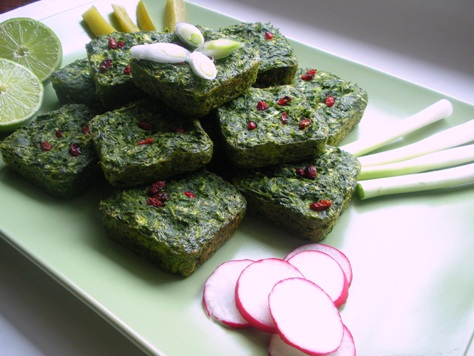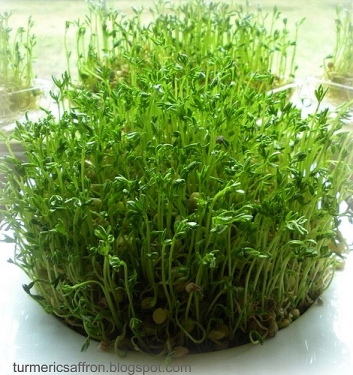For today’s post in celebration of Nowruz, the Persian New Year, we have a guest blogger, Azita from the wonderful site Turmeric and Saffron. Azita is an Iranian who celebrates the cuisine and culture of Iran on her website. In addition to being an accomplished cook, she is also talented in food styling and food photography and regularly illustrates the recipes on her site with her lovely photos. Here’s some of her memories of the Norwuz celebrations past, some information about the holiday and of course, a recipe and photos. Many thanks, Azita!
Back home in Iran, the days leading up to Nowruz were always very busy and bustling with many different activities. These would include the cleaning of our house from top to bottom, washing the drapes, changing the upholstery of old chairs, cleaning our Persian rugs and some years we would apply a new coat of paint to our living room and dining room.
My mother would take my sister and I to pick out our favorite floral fabrics for our New Year dresses. The next stop would be going to the seamstress for fittings. On the other hand, my father would take my four brothers to the tailor for their Nowruz suits.
The change of the season along, with all the preparation, would bring about such excitement and joy especially knowing that we would have 13 days off from school. During the day of the Nowruz celebration, we’d wear our new clothes and shoes and take our seats around the haft-seen table and wait for the countdown to the exact moment of the spring equinox (tahvil-e sal). My mom would light the candles, one for each of us, including my parents. In the last few minutes we’d remain quiet and would hold some grains of uncooked rice in the palms of our hands, representing blessings, while praying for health, happiness and everything else that we wished for.
My father would always remind us to pray for others before wanting and wishing anything for ourselves. Nowruz gifts (eidi) were usually money given to us by my parents and elders of the family. Traditionally, the eldest always give eidi to the youngest. The following days after the New Year would be spent by paying visits (did-o-bazdiz) to family members, relatives and friends of the family.
This year, March 20th marks the beginning of the Persian New Year (Nowruz) celebration for year 1389. Nowruz always begins on the first day of spring/vernal equinox, when days and nights are of equal length. Nowruz holiday lasts for 13 days and it literally means “new day” in Persian. It symbolizes a new beginning and the victory of light over dark and the harshness of winter. The history of Nowruz celebration is rooted in the 3000-year old Zoroastrian belief system and goes back to the great Persian Empire.
Today, Nowruz is celebrated as greatly as ever and is a major national holiday in Iran. In preparation for the New Year festivities a thorough spring-cleaning (khaneh-tekani) is carried out weeks before the New Year celebration. Growing sabzeh (wheat, barley, lentils) is an essential part of getting ready for New Year. Setting the Nowruz table (sofreh-e haft seen) and sitting around it during the turn of the year and wearing new clothes are practiced by Iranians all over. According to Zoroastrian beliefs, the souls of the departed come down and join in the festivities and celebrations. Even though the history of Nowruz and the Haft Seen spread may be somewhat obscure, it has been written about by the great Persian poet Ferdowsy (935–1020) in the book of “Shanameh”. During the Nowruz celebrations we are reminded once again by the ancient Zoroastrian teachings of “Good Thoughts” (goftar-e nik), “Good Words” (pendar-e nik), and “Good Deeds” (kerdar-e nik).
Haft Seen
The Haft-seen is traditionally set up with seven items beginning with the letter “seen” (S) that symbolically represent, health, happiness, prosperity, joy, beauty, patience and re-birth. The “seens” are as follows:
Sabzeh (wheat sprouts) representing rebirth, new life and fertility
Sumac representing the spice of life
Senjed (dry fruit of the lotus tree) representing love
Sonbol (hyacinth flower) representing spring
Samanoo (sweet wheat pudding) representing the reward of patience and sweet life
Sekeh (coin) representing wealth and prosperity
Seer (garlic) to ward off bad omens
The haft-seen table would also include a mirror at the top, candles representing light, seeb (apple) representing beauty and health, serkeh (vinegar) representing age, colored eggs representing fertility, gold fish the symbol of life, and rose water, a symbol of its cleansing power and an orange in a bowl of water representing the world. Many people would also place their holy book or a book of poetry by Hafez on the table.

One of the most popular and traditional dishes served on the day of Nowruz celebration is a fried or baked vegetable and egg dish called Kookoo Sabzi. Another traditional Nowruz dish is Sabzi Polow (herb rice) which is usually served with smoked or fried/baked white fish (mahi).
Kookoo Sabzi
Ingredients
2 cups chopped parsley
2 cups chopped scallions (green parts only) or (leeks, chives)
2 cups chopped spinach
1 cup chopped dill
1 cup chopped cilantro
2 tablespoons barberries (zereshk), optional
2 tablespoons chopped walnuts, optional
5 large eggs
1/3 teaspoon turmeric
1 teaspoon salt
1/2 teaspoon pepper
1 tablespoon flour
4-5 tablespoons vegetable oil
Directions
Clean and wash the vegetables. Chopping them by hand is the preferred and the traditional way. However, the convenient and the less time consuming way is to use the food processor. You may chop them finely but I only pulse it a few times and not to have it mushy at the end. In a large mixing bowl, beat the eggs well with a whisk. Then add all the above ingredients except the oil and mix thoroughly until well blended. To this mixture add one tablespoon of oil and stir well.
In an oven proof baking dish place the remaining 3 tablespoons of oil. Gently pour the herb mixture into the dish evenly, cover lightly with an aluminum foil and place in a 350 degrees pre-heated oven for 40 minutes. Remove the foil half way through the cooking. Once cooked, remove from oven and let it cool for a few minutes before cutting it into small pieces. Place on a serving platter. It could be served hot or cold with warm bread and yogurt or mixed-vegetable pickles (torshi).
Sounds delicious Azita! Again, many thanks for sharing your memories and knowledge of Nowruz with us. Happy Nowruz, Happy Spring to you all. (Words and Photos by Azita M.)
Additional: Laura would like to dedicate this post to colleagues Arash and Kamiar Alaei who are celebrating this Nowruz in prison.

